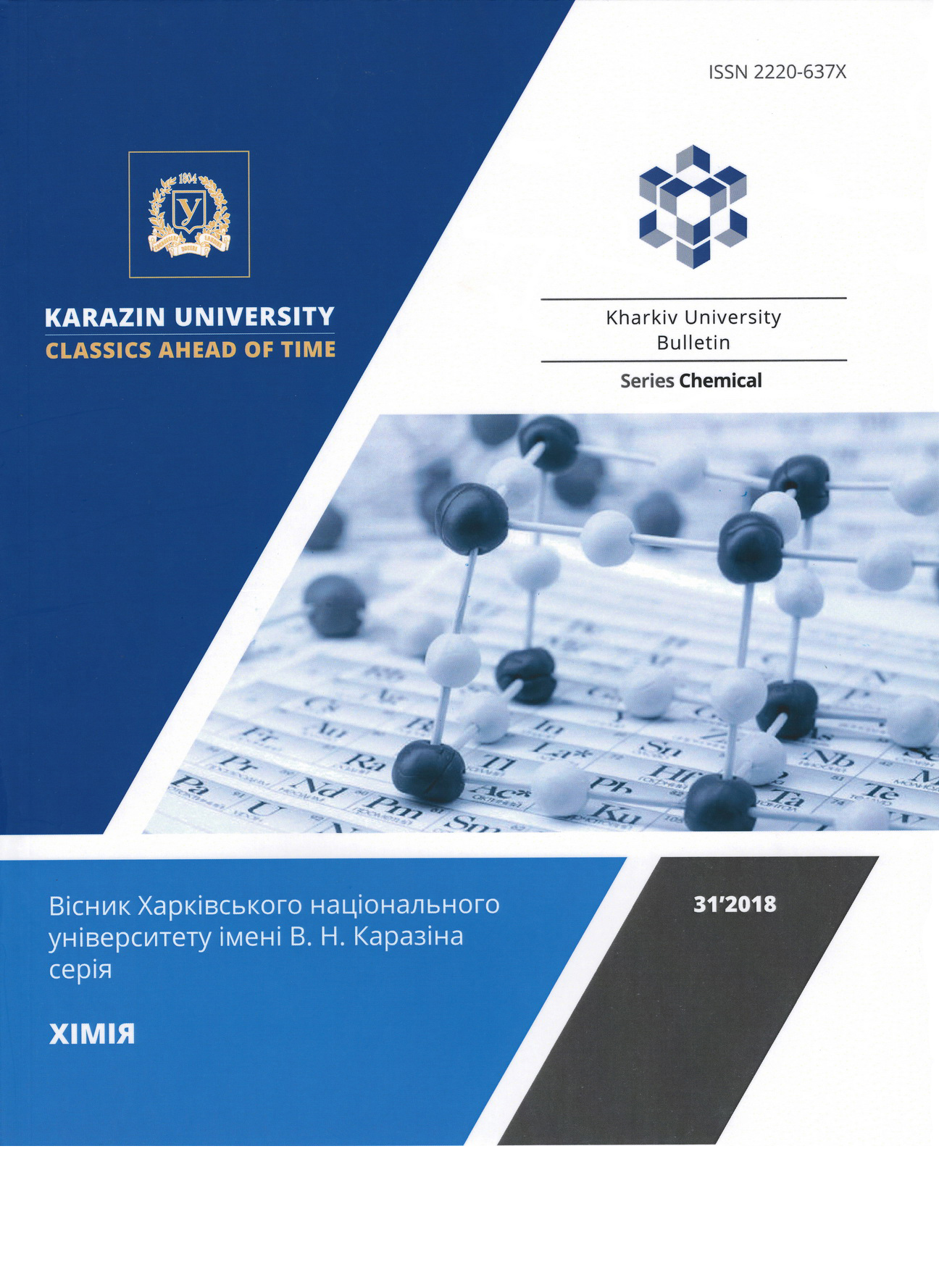Search of new luminophores with predetermined physicochemical and chemical properties ХVІ. N-arylmethylene- and N–hetarylmethylene- substituted for polyvinylamine
Abstract
Investigation of transformation of polyacrylamide (PAA) in the polyvinylamine (РVAm) the reaction of Hofmann and further transformation of NH2-groups polymer by the Leuckart—Wallach reaction. The reliability of the transformation of PAA into PVAm is confirmed by the reaction of diazotization and acylation of the samples obtained by PVA and by the color reactions of the PVAm transformation products. The structure of PVAm is also confirmed by data from IR spectroscopy and pH-metric titration. The product obtained is a vinylamine copolymer (up to 80%), acrylamide and acrylic acid. Syntheses of N-arylmethylene- and N-hetarylmethylene substituted PVAm, is carried out by the reduction alkylating of NH2-groups of РVAm by aromatic and heterocyclic aldehydes [5‑(4‑chlorophenyl)-2-(4-formylphenyl)oxazol-1,3, 5-(4-methoxyphenyl)-2-(4-formylphenyl)oxazol-1,3, 5‑(4‑methylphenyl)-2-(5-formylfuryl-2)oxazol-1,3, 5-(4-methoxyphenyl)-2-(5-formylfuryl-2)oxazol-1,3, 3,5-diphenyl-1-(4-formylphenyl)-2-pyrazoline, pyrene-3-aldehyde, possessing luminescence, in presence formic acid. The indicated derivatives of PVAm are got also by successive formation with NH2-groups of elementary links of grounds of Schiff and reduction of them NaBH4. The derivatives of PVAm containing N-arylmethylene and N‑hetarylmethylene groups [...–CH2−CH(NH−CH2−Ar) – ... and ... –CH2−CH(NH−CH2−Het) – ...), respectively], low-grade in water, nonpolar organic, partially soluble in polar solvents and readily soluble in acid solutions.The got standards of modified PVAm, containing elementary links of …–СН2−СН(NH−CH2−Ar)–… and ...–СН2−СН(NH−CH2−Het)–..., luminesce both in the hard state and in solutions. IR-specta (hard state) РVAm and modified foods is studied, spectrums of absorption and luminescence of N-arylmethylene- and N‑hetarylmethylene substituted for PVAm, (in solutions of the mixed solvent is ethyl acetate - formic acid). The fluorescence maxima of PVAm derivatives are shifted to the short-wave region in comparison with similar solutions for initial aldehydes due to the reduction of the chromophore chain through the replacement of the aldehyde group with methylene.
Downloads
References
Shkumat A. P., Semenchenko V. V. The search of new luminophores with predetermined physicochemical and chemical properties. ХII. N-Sudstituted polyacrylamide and copolymers N-getarylsudstituted acrylamide, getarylacrylate, acrylamide and acrylic acid. Kharkov Univ. Bull., Chem. Ser. 2016. Vol. 27(50), P.60–71.
Shkumat A. P., Ivanova U. S. The search of new luminophores with predetermined physicochemical and chemical properties. ХIIІ. Сopolymers of acrylamide and acrylic acid with 3-аryl-1-phenyl-5-(2-furyl)-2-pyrazolines. Kharkov Univ. Bull., Chem. Ser. 2017. Vol. 29(52), P.61–68.
Stackman R. W., Summerville R. H. Water Soluble Poly-N-Vinylamides: Synthesis and Physicochemical Properties. Chem. Prod. Res. 1985, Vol. 24, P. 242-246.
Pinschmidt R.K. Polyvinilamine at Last. J. Polum. Sci. 2010. Vol. 48. P. 2257 2283.
Cahari A., Coqueret X., Lablache-Combier A., Loucheux C. Preparation of polyvinylamine from polyacrylamide: a reinvestigation of the Hofmann reaction. Makromol. Chem. 1993, Vol. 194, P. 1879-1891.
Zhao H., Li Q., Xu W., Huang F. Study on synthesis and thermal property of polyvinylamine. Trans Tech Publications 2011, V. 150, P. 1500-1503.




